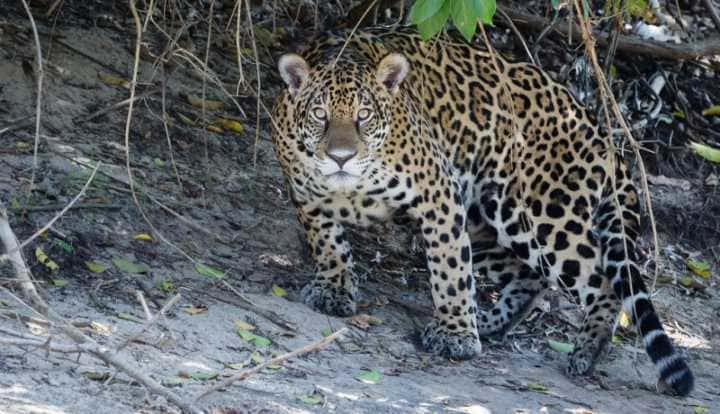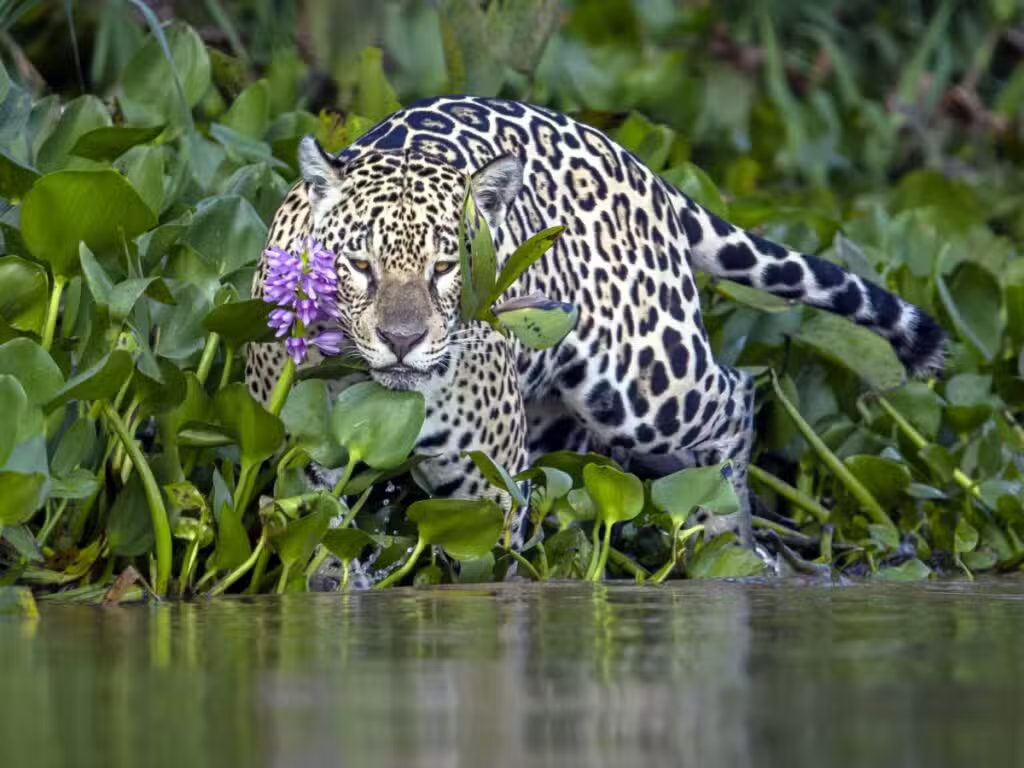As fires rage across the Pantanal in central-western Brazil, the world’s largest tropical wetland, jaguars are showcasing a remarkable ability to adapt to the intensifying threats of their environment.
While countless species suffer from the impacts of these fires, jaguars survive by using riverside refuges and sustaining themselves on prey like caimans and capybaras, which are essential resources as the fires worsen each year.
This year alone, over 16% of the Pantanal—an area the size of Maryland—has burned, leaving much of the ecosystem devastated and limiting safe zones for its wildlife.
Jaguars, however, are managing to survive and even increase their numbers, particularly in areas like the Encontro das Águas State Park.
Here, the jaguar population, especially females and cubs, has steadily grown thanks to a plentiful supply of prey and mates within the park’s protected boundaries.
According to wildlife ecologist Abbie Martin, head of the Jaguar ID Project, “In 2021, the year after the mega-fires, we saw 17 females with their cubs in the park,” a sign of the jaguars’ resilience despite the fires.
Jaguars’ reliance on rivers is key to their survival, as these areas offer a buffer against fires while ensuring access to vital food sources.
However, their future remains uncertain. Climate-driven droughts threaten to dry up these rivers, and expanding deforestation for cattle ranching could destroy the resources these jaguars depend on.
Additionally, water diversion projects pose a risk to their habitat, and any reduction in river flow could push the species further into endangered status.
As fires and human encroachment continue to threaten the Pantanal, conservationists stress the need to protect this unique ecosystem.
Jaguars, as apex predators, play a critical role in maintaining balance, making their survival vital not just for their own population but for the entire Pantanal biodiversity.
This article by Trinity Sparke was first published by One Green Planet on 27 October 2024. Image Credit :Marcos Vergueiro/Shutterstock.
What you can do
Help to save wildlife by donating as little as $1 – It only takes a minute.






Leave a Reply